C4 EDGE: Collaboration in action for Army
In order to get an idea of the art of the possible, Army has engaged with a consortium of Australian owned and run companies led by EOS to provide a proof of concept for the delivery of C4I products and technologies and capabilities in Australia.
The approach started taking shape in 2019, with a collaboration deed signed in 2020 with 18 companies and another six associate companies also contributing, according to Grant Sanderson, CEO of EOS Defence Systems. Read also : Tel-Instrument Electronics Reports Net Income of $600K for FY 2021 | 2021-06-29 | Press Releases.
“Army wanted to understand exactly what Australian industry was capable of and what they were prepared to do in order to meet future battle group and below Australian secret level systems development, and to deliver that in an accredited process,” Sanderson explained to ADM. “They asked at the MilCIS conference in 2019 if Australian industry was interested in this and asked for submissions. EOS made a submission to Army, a proposal to Army to pull this industry consortium together and to deliver a demonstration of capability.”
Army took that offer up and in middle of 2020 and a contract for $4.5 million was signed to pull the team together. This initial contract saw the completion of a detailed scoping study.
“This allowed Army to fully understand what technology was going to be demonstrated and in what construct, and to have some say over the nature of the demonstration and the architecture that would be demonstrated,” Sanderson said.
“They were happy with that response, very happy with the way that Australian industry came together and in November [2020] we signed a follow on contract for $31 million which then has funded the activity, the entire demonstration activities, which will be complete by the end of 2021 December.”
That demonstration will essentially deliver a battlegroup and below full architecture of accreditable, secure communications solutions, all the way from blue force tracking, satcom, crypto, waveforms, and multiple different radio architectures. It will also demonstrate the ability to integrate robotic and autonomous systems into the network lethality solutions, other sensor solutions.
“Army’s getting a lot more value for the money that they’ve invested,” Sanderson said. “So there’s certainly a lot more than $35 million worth of effort, technology and capability being put together and demonstrated.”
Army clearly agrees.
“C4 EDGE offers the Australian Army an understanding as to the readiness of Australia’s C4 industry to compete for future major Defence communications projects,” a Defence spokesperson said in response to questions from ADM. “The intent is to assess and build sovereign industry capacity to meet direction from the Australian Government, but also provide Army with a more agile communications system with assured and illuminated supply chains to meet future challenges.
“The experience from the C4 EDGE program has been positive to date. Industry have demonstrated an enthusiastic and cooperative approach to design a mobile tactical communications system. Each company is bringing their own expertise and innovations to the table.
“In November 2021, C4 EDGE will demonstrate a representative C4 capability for an Army Battle Group. This includes radio systems for voice and data services (including satellite communications), cryptographic equipment, software applications and ancillaries. Given the range of capabilities on display, it is expected to generate a number of opportunities for Defence to consider,” the spokesperson said.
Collaboration in detail
In order to facilitate this, all the companies have come together under a commercial architecture so that everybody’s IP is protected but also all the new IP that will be generated through this activity is maintained and sustained for future industry collaboration.
“The system is going through the first stage of an accreditation process, so there’s support from ASD to the program; and that we have created a number of both physical and virtual environments in which all this integration across the companies, which are based in six states and territories, can collaborate and bring all this together,” Sanderson explained.
There will be a C4 EDGE stand at Land Forces this year but the full final demonstration will be in the Canberra Region in November this year.
In terms of the demonstration program later this year, work is well underway; the usual magic black boxes, ancillaries and architecture are taking shape.
“Some of that technology is being hosted in accredited black boxes, so they’re being developed and manufactured by Australian industry,” Sanderson said. “So all of the systems’ cryptography and the waveforms development which are being produced by a number of different companies will be plugged into all the different radio architectures that we are modelling and demonstrating.”
There are multiple different architectures, physical and virtual radio architectures that are being modelled for Army, and that’s to give obviously all the radio manufacturing companies the opportunity to demonstrate what they can and might be able to do in the future.
There will also be peripheral sensors and robots, along with vehicles and modules that were manufactured and integrated to demonstrate on-the-move capabilities, Sanderson says. Satcom and blue force tracking and an Australian battle management system demonstrated as part of stitching the whole thing together are also part of the demonstration.
“It’s an end to end battlegroup and below solution,” Sanderson said to ADM. “In fact, there’ll be a number of different solutions for battlegroup and below demonstrated. Again, the purpose of the activity is to just simply conduct a demonstration of what Australian industry can do now and what Australian industry will be able to do in the future.”
“The C4 EDGE approach demonstrates one method to understand and grow sovereign capacity,” a Defence spokesperson said. “Other options open to Australian companies include the Defence Innovation Hub and more Integrated Investment Program activities. Each program or project must consider its own needs in determining which approach is most suitable to achieve their objectives.
“The experience of C4 EDGE will inform a number of future projects including Land 200 Phase 3 Battlefield Command System. Land 200-3 is expected to acquire between $1.5-2.3 billion in C4 capabilities from 2023 to 2027.”
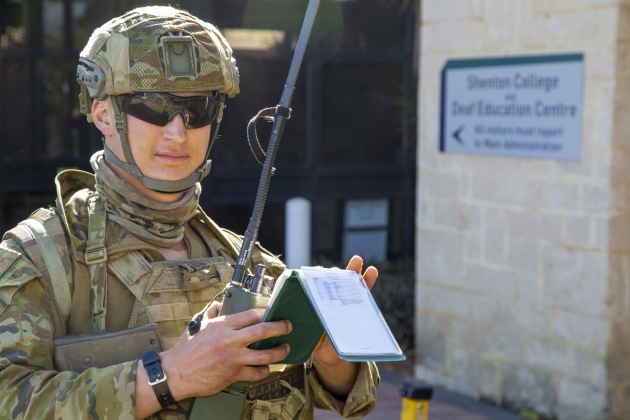
Outputs
Two of the most important outputs from C4 EDGE will be a paper that actually defines what Australian industry is capable of doing right now and what Australian industry could be able to do in the future with the right level of investment to deliver a full sovereign outcome.
“I think what the demonstration will show is that Australian industry is capable right now of delivering 80-90 per cent of a future command and control system and, with some targeted appropriate investment from government, could be in a position to deliver a fully competitive C4I system where that battlegroup and below capability could be delivered by Australian industry to meet whatever Army’s future requirements are,” Sanderson said.
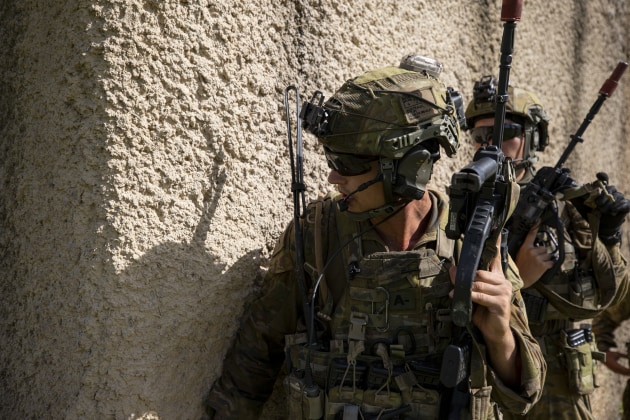
The second paper will be a discussion paper on potential acquisition strategies and how Defence could engage with industry to ensure that the ecosystem becomes stronger, more viable and more relevant.
“One of the spinoffs out of C4 EDGE is that we are building technology solutions across multiple companies that will be able to be exported,” Sanderson said, a sentiment echoed by the collaboration partners across the board.
All technology is ITAR free and will be able to be exported once cleared by the relevant authorities.
“For example, there are a number of C4 EDGE outputs from other companies that are being used in EOS counter-drone packages that we’re building for export now,” Sanderson said.
“It’s interesting, I mean if you look at what Codan has been doing with its investment strategy, what EOS is doing with its investment strategy into SpaceLink, C4 EDGE is actually facilitating a lot of additional industry investment and market consolidation, which I think is going to be extraordinarily beneficial to Australia going forward.”
There’s no question, Army has taken a risk here, Sanderson reflects.
“It’s a risk that is going to pay off and that risk, that demonstration of commitment has given industry the confidence to invest, not just into technology but also into wider acquisition strategies. Codan is a good example with their recent acquisition of Domo Tactical Communications in the US and UK..”
“An Australian company owns a world leading mesh radio network company that is heavily involved in both UK and US futures development with their armies; that’s now an Australian entity.
“What EOS is doing with SpaceLink and our investments into air solutions and what’s going on in a number of areas such as Etherstack, developments around Acacia and Solinnov, these are all big deal confidence builders which will deliver much better industry capability in this country. It’s all come out of a demonstration by Defence that it’s willing to lean forward and create pathways for Australian industry to get where it needs to be -globally competitive.
“C4 EDGE I think is an ideal model for how Defence should be engaging with industry to explore all sorts of technologies.”
Head of Army Capability Major General Simon Stuart agrees (see more in From the Source this month on P162 for more on this).
“What we want to do is effectively use this as a learning activity in the proof of concept,” MAJGEN Stuart said. “While replicating C4 EDGE in other programs may not work exactly, it’s the principles of the approach which is to communicate requirements to work collaboratively on the art of the possible and set ourselves collectively a set of milestones and challenges that prove or disprove our capacity to solve those problems and do so in a way that brings industry in very early and builds some trust through co-investment.
“One of the other really positive aspects of C4 EDGE are the range of other collaborations between various industry partners, a spinoff if you like. We’ve brought industry together, connected them for other endeavours as well. So I think it’s going well and I expect it will deliver what we expect, which is a proof of concept and then hopefully open up opportunity for industry to apply its capacity to our needs in an area that they haven’t had those opportunities previously,” MAJGEN Stuart concluded.
“It could be equally done for space, it could be equally done for maritime systems,” Sanderson enthused. “Rather than CASG conducting RFIs to try and work out what Australian industry is capable of or not capable of, investing some money in there well ahead of there being an acquisition requirement that facilities Australian industry to demonstrate existing capability – is a really good model. It doesn’t cost a lot and you get a lot more return. It’s a significant de-risking, particularly given the government’s AIC policies because you’re not speculating. You’ll actually be able to have clear demonstrations of capability, so when you do your risk analysis you will have proper data on which to base it.”
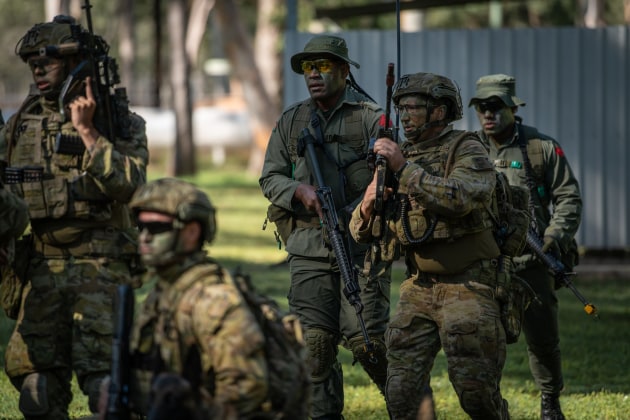
Sovereignty, capability and interoperability
In terms of battlegroup and above there will still be a strong need for coalition interoperability between Australia and the US and the gateways already in place. There’s nothing that C4 EDGE is doing that won’t facilitate the ability for these systems to integrate into existing JP 2072 architectures.
“But, more importantly, the current ADF systems which are all ITAR controlled, can’t actually be integrated with lower coalition partners, so south Pacific countries, southeast Asian countries, even our first responders in Australia can’t integrate into our ITAR controlled networks,” Sanderson explained to ADM. “They will be able to under this approach. This gives Australia control over those lower tactical networks so that Australia itself can develop networks that are capable of coalition interaction with our south Pacific, southeast Asian and even Australian first responder capabilities, which they can’t do now.
“In the bushfires last year, the Australian Army was not able to lend radios to Australian first responders to plug into ADF networks because they were all ITAR controlled, and without the appropriate security clearances, we can’t share that technology.”
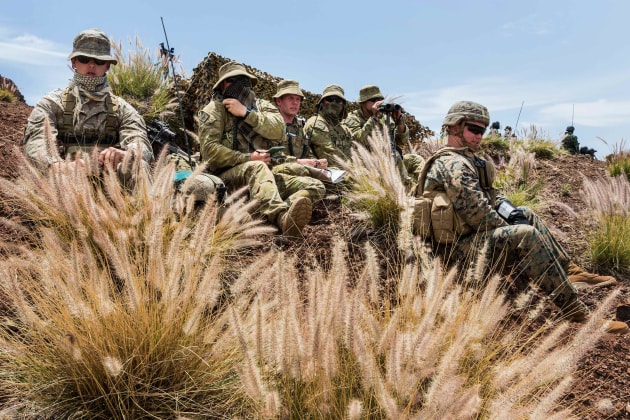
Players
Given the amount of companies involved in the C4 EDGE program, ADM spoke to a selection of them (here is alphabetical order) to get an idea about what they each bring to the table and how the process is going for them so far.
3ME
Battery specialist 3ME is reaching out from its traditional business of batteries for large mining vehicles into the Defence space. They do large format lithium polymer batteries that can be deployed into underground mines due to their proprietary battery technology that removes the threat of lithium battery fire.
There’s a big push to electrify as much equipment underground as possible and safe, powerful batteries are a big part of that, Chief Growth Officer Steve Lawn explained to ADM.
“The crossover to Defence from our more recent focus on the mining industry makes sense. You’ve got these large, powerful batteries that are safe and rugged enough to used in a mine setting and then from a Defence perspective, a lot of the end user requirements are the same. For example – Defence needs high performance battery technology that won’t fail, hence it is great to be providing the Australian Defence Force products that have been tested and proven in the Australian mining industry.” Lawn said.
“In addition to that, Defence is digitising, it’s automating. The requirement for battery power is going up exponentially on the battlefield. So high performance, safe batteries are required, and it appears likely this requirement will increase over the next generation of technologies. In an attempt to cater for this trend, we’re re-conceiving how energy is carried but then also managed across multiple assets on the battlefield. How do we provide a battery with market leading energy density but in a more ergonomic, easier to use package?”
“So say if we’re out on a job and we come into contact with a vehicle, how do we rapidly recharge or bomb up power from a vehicle to the soldier? It started with how do we provide the soldier with a great battery but then it’s moved into how do we then manage battery power across the battlefield. It’s a bigger scope.”
While the company is relatively small at this point with 35 people on the books, more than a quarter of them have a Defence/veteran background. “We want people who will have a crack and get things done,” Lawn said. “Veterans are great at that.
“EOS, Matt Jones and Jen Whitehead are absolute legends,” Lawn said in dealing with the collaboration partners. “They’ve been so good and easy to work with from a defence prime perspective. They’ve been the opposite of hard to work with and they’ve just been very encouraging. We’ve been focused on trying to make good products and they’ve coached us through the business side of the relationship, they’ve been really supportive, they’re just genuinely good people to work with and work for.
“They’ve also introduced us to more partners along the way. I think they actually care about setting up sovereign capability. In some cases, people seem to use that as a throwaway line but they actually care. We’re very grateful to be involved in the project!”
Acacia Systems
Acacia Systems is a 100 per cent Australian-owned and controlled company based in Adelaide, South Australia.
“We have been supporting the ADF for almost 30 years and have a proven track record of delivering innovative projects for Defence,” Ted Huber, Acacia Founder and Chairman said to ADM.
From the development of ECCM solutions for F/A-18 fighters on behalf of DSTG in the 1990’s through to advanced detect and track systems in service with the RAN today, Acacia has an outstanding team of scientists, mathematicians, software and hardware developers and engineers designing and delivering high-end software systems.
The company maintains significant depth of skills in the areas of data fusion, tracking, sensor performance, data analysis and environmental mathematical modelling. Translating these into advanced deployed systems is achieved through the application of disciplined systems, software and hardware engineering practice.
Acacia’s workforce currently comprises more than 40 staff, comprising 45 per cent software developers, 32 per cent systems engineering and project management, 13 per cent mathematical modelling and algorithmic designers with less than 10 per cent of staff in management, business development and administration.
“Acacia’s contribution to the C4 EDGE program is to showcase the integration of software and hardware to provide the Army with the ability to rapidly exchange information between C2, sensor and effector nodes in a battlefield environment,” Huber said. “This BMS networking approach will provide greater situational awareness, allow faster and more informed decision making together with improved detection and target acquisition.”
Acacia Systems will rely on considerable experience gained developing the proven Cortex technology stack which is at the heart of the MMS provided to the AMSA Search and Rescue (SAR) aircraft. The Cortex system is currently being adapted to:
• Provide situational awareness view (known as the “Spatial View”) that will quickly update to keep the operator aware of their ever-changing environment (Display of Blue and Red forces).
• Enable Battlegroups to create, prioritise and send orders and reports.
• Allow the operator to filter out unwanted data to reduce cognitive workload required to interpret the environment around them.
• Allow the user to quickly and efficiently create/update reports (Medevac, Contact and Situation Reports etc.).
• Allow Commanders to quickly create and share battle plans across battlegroup and below.
• Cortex will interface to multiple external applications and role equipment including weapon systems, passive sensors, threat detectors, and radios.
• Monitor and provide information on system health, alerts and maintenance functions.
The Cortex System will keep a clear and precise record of all relevant data captured during a mission. This information can be replayed for debriefing, training or evidential purposes.
“In the C4 EDGE application, Cortex will deploy up to 15 nodes which will include C4 HQ, Vehicles (Mounted), Soldiers (Unmounted) and Logistics Node,” Huber explained to ADM. “Each node will interface with several sensors, communications and ruggedised display devices depending on role and hierarchy. The system will use a Human Machine Interface (HMI) leveraging off experience gained from other applications and also through experience afforded by operational personnel embedded within the development team.”
Barrett Communications
“Barrett Communications is proud to be a partner in the C4 EDGE program,” Khes Ludher, their COO said to ADM.
Barrett, have been innovating, designing and manufacturing HF and VHF radio communication systems for over 40 years and continues to be a supplier of choice by many international Defence Forces, Ludher says.
“The C4 Edge program and the collaboration with the other partners involved, is our opportunity to demonstrate the knowledge and intellectual property that already exists within Australia’s Defence Industry and that together we can build a sovereign, secure communications system for the ADF.
“As a proud Australian company where all R&D, assembly and production is conducted from our Perth based premises, we will be providing the C4 EDGE program our PRC-4090 Tactical HF SDR system and developing the next generation PRC-4080 Tactical VHF SDR. These systems together with waveform and additional security options, developed by other C4 EDGE partners, will provide the ADF with exceptional communications for wherever they are called to serve.”
Barrett has previously worked with the ADF and local authorities in East Timor by providing HF voice and data equipment, RAAF search and rescue equipment for both bases and deployable assets, delivered HF base station and manpack radio equipment to the ADF for training with regional partners and also supplies radio equipment in the Pacific Patrol Boat Program. They also have significant export contracts into the US, police and law enforcement worldwide and other foreign militaries.
CBG
CBG Systems is an advanced manufacturer of Moonraker Antennas, Structural Fire Protection systems and SolarSigmaShield, a Mobile Camouflage System (MCS) or Signature Management System. Moonraker’s diverse range combined with R&D capability, flexible manufacturing facilities and short lead times allows fast response and development of unique customised solutions to complex communications challenges. All Moonraker products are design to provide maximum performance and withstand years of service in the most extreme environments
CBG Systems will draw on the knowledge and experience gained in over 40 years of manufacturing Moonraker antenna systems, combined with our development, prototyping and manufacturing capability to aid in the development of the C4 EDGE system, according to a statement from the company.
It represents a unique opportunity to showcase Australia’s sovereign capability in the development of evolutionary communications environments.
CBG Systems is tasked with the design and development of two unique antenna systems.
1. Vehicle Mounted HF NVIS semi loop antenna system
2. Body Worn broadband UHF Antenna system.
Vehicle Mounted HF NVIS
A Compact HF NVIS semi-loop vehicle antenna system designed to provide high performance continuous close in omnidirectional communications with no skip zone.
The system requires low RF transmit power to achieve continuous communications across the 2-30MHz band in the 0-1200 km range.
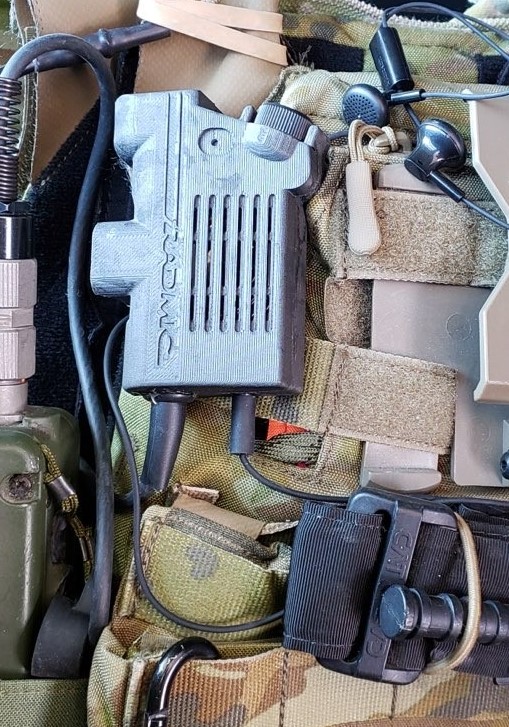
Using high angle radiation in the 3-17 MHz frequency band, the system operates as a NVIS (Near Vertical Incidence Skywave) antenna to provide reliable low noise communications. This mode will be particularly useful when communicating over rugged or mountainous terrain, where, for security reasons, long range radiation methods are undesirable.
The system uses either the vehicle’s metal roof or lightweight aluminium base plate which also enables the antenna to be operated as a stand alone unit separate to the vehicle.
Tuning over the entire HF band is automatic via the ATU with ALE capability. High performance is assured, even in environments subject to noise interference due to the inherent filter qualities of the design, which combines automatic frequency tuning, a narrow bandwidth and excellent NVIS propagation of the signal.
Body Worn Broadband UHF
A cutting edge, high performance body worn antenna system for wideband communications and electronic warfare.
Combining multiple antennas, the system maximises radiation efficiency and delivers higher gain and a more consistent omnidirectional coverage resulting in higher power on target, greater range and/or longer battery life and lower battery weight, depending on system priorities.
The system minimises the effects of shadowing from the users body and/or equipment which provides substantially improved omnidirectional radiation performance and reduced RADHAZ to the wearer. The antennas unique configuration and durable construction allows the system to be integrated into a vest or pack making the antenna discreet and less prone to snagging.
Cyborg Dynamics Engineering
Cyborg Dynamics Engineering is a robotics and AI company specializing in advanced autonomy bespoke robotic solutions. To date it has provided novel robotic solutions to the construction, recreational vehicles and defence sectors.
For the C4 EDGE program Cyborg is providing integration of the Australian designed and built Warfighter UGV platform into the C4Edge network, according to a statement from the company.
This will include integration with a number of other industry members such as XTEK, EOS and GME. Cyborg brings years of involvement in robotics and AI to the program as well as its participation in the Army’s Human Machine Teaming program. This has helped inform Cyborg’s design solutions for data transfer, UGV driving technology and human factors for UGV operation with dismounted forces.
The UGV is the lightest UGV in the world to effectively fire a 50 Cal machine gun, showcasing how the C4 EDGE program can communicate to vehicles, dismounted forces and unmanned systems across a battle net. The UGV control, as part of the program, will be enabled via vehicle based interfaces or soldier End User Devices. Control handover will also be demonstrated, showcasing further capabilities.
To date Cyborg has interacted with a number of the C4 EDGE partners, in order to integrate the various systems onto the platform and ensure it provides a seamless solution as part of the larger C4 edge program, according to the company. Cyborg is also able to leverage the wealth of knowledge amongst the C4 EDGE community to better inform its own design decisions with regards to battle management, UAS teaming, encryption and frequency management.
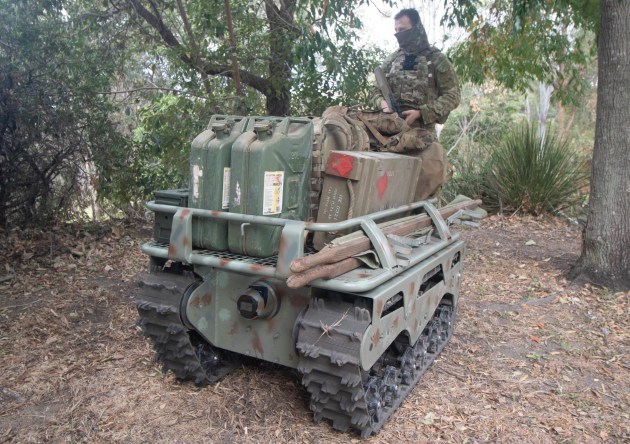
GME
For over 60 years, GME has been an industry leader in the civilian RF communication technology space, according to a statement from the company. Based in Western Sydney, GME remains a privately-owned company and is 100 per cent Australian, employing over 200 staff with a commitment to Australian design and manufacturing.
GME operates from our purpose-built facility complete with in-house engineering, state-of-the-art manufacturing, and national warehousing capabilities which support GME’s ability to undertake sovereign manufacturing projects and create custom technical solutions within the RF Communications space.
Supported by a range of in-house testing equipment, GME takes pride in producing products which are designed to meet and exceed not only Australian but also International standards, as required. Additionally, with our manufacturing facility retaining an ISO 9001 Manufacturing Process Accreditation, GME remains an industry-leading manufacturer.
“C4 EDGE is one of the most important programs for Australia’s national security and sovereign capability,” according to a statement from the company. “This program will deliver to Army a sovereign tactical command, control, communications, and computers system for battlegroup and below.
Whilst new to the defence industry, GME is fortunate to the robust foundations of sovereign engineering and manufacturing capabilities and ability to collaborate with other Australian companies to securely create innovative and customised RF communication solutions for our nations defence forces.
HDE
HDE will be providing a speaker microphone and a single-sided headset to the C4 EDGE program.
A true micro-SME, HDE is led by CEO Greig Hutton, a former ADF member himself.
“HDE is currently conducting a trial with the ADF. With the exception of the circuit board manufacture, everything has been made in Australia, from the 3D printing to the final assembly,” Hutton explained to ADM. “I know I am a small player in the scheme of things but since my involvement with the C4 EDGE Program, I have benefitted from the support and advice received from other companies.” So much so, that if the trial is a success, HDE will be able to use partners in the C4 EDGE program to ensure all products are built in Australia.
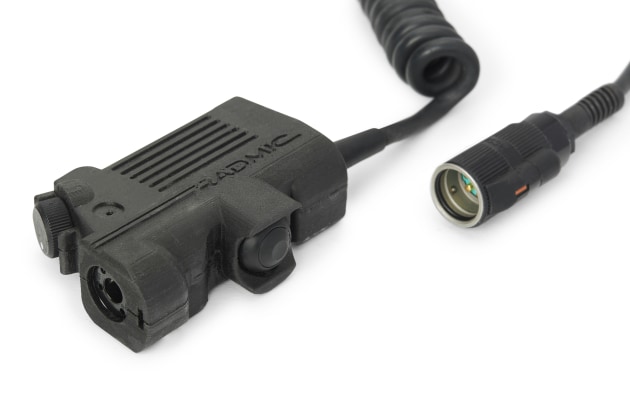
The HDE product on trial has been 3D printed to allow for rapid adjustments to the physical form before the design is finalised and to ensure that the end users are happy. HDE already has a patent for one of the devices and is looking at expanding the range and moving into export markets where possible.
Insitec
Among other technical elements, Insitec Military Intelligence and Space Systems (MIS) will provide to the C4 EDGE program the mounted and dismounted computing environment, tactical network systems, integration services and tools – all supported by a new distributed Open Systems Integration Laboratory (OpenSIL) facility co- located across six locations around Australia.
Standing up of the OpenSIL represents a major investment by the Insitec Group in national collaborative infrastructure and will form a progressively accumulating and enduring sovereign industrial capability that will be able to support other Australian Army and ADF programs.
“Stepping up to the challenge of providing systems integration capabilities to the C4 EDGE program will draw on aggregate Insitec Group capacities bolstered over 2020 as part of a wider enterprise growth initiative,” Insitec chairman Andrew McNeill said. “These have been further enhanced in 2021 through the acquisition of Horizon Defence Systems (and its successful integration into the MIS business), along with the achievement of ICT Partner Arrangement (ICTPA) status with the Department of Defence, the latter of which has roughly doubled our Group workforce.”
“HDS has assembled an impressive ecosystem of Australian industry collaborative members who will now become part of an expanding Insitec partner ecosystem,” Insitec Pty Ltd Managing Director, Michael Branch, said.
Insitec had joined the HDS corporate-based Australian industry collaboration group over two years ago and has since played a lead role in substantiating the organisation’s bid for Joint Project 9111, the ADF’s future Joint Command & Control capability technology and services business opportunity
“Joining EOS, one of our key partner organisations, in bringing together local industry capacities to deliver the C4 EDGE program is a really exciting development for both companies,” Branch said. “It represents a truly transformational initiative by the Commonwealth and the Australian Army that builds upon the intent of Defence’s First Principles Review (2015), as well as the reassessment of supply chain
assurance priorities outlined in the more recent (2020) Defence Transformation Strategy.
“Through inserting some of our critical technology in advanced tactical network capability and expertise in technical systems integration into the C4 EDGE outcome, MIS will clearly demonstrate key internal capabilities developed over recent years in surveillance, intelligence data collection, analysis dissemination and complex systems integration – all of which are designated Defence Sovereign Industrial Capability Priorities,” Branch said.
Speaking directly to the benefits of C4 EDGE program involvement, the General Manager of MIS, Jarrod Smith, said: “As the newly-appointed head of MIS, it gives me great pleasure to be working first up with one of Australia’s recognised success stories in the Defence and national security community business space. Elevating our close relationship with EOS and other C4 EDGE team members, for which Insitec has maintained productive business relations for many years, will be a key element to successfully meeting the Army’s program expectations.
“The collaborative approach of the C4 EDGE endeavour also draws on the pioneering work of Horizon Defence Systems, which proved that local enterprises working in partnership within an open information sharing ecosystem can yield truly innovative concepts and globally competitive solutions to enhance the capabilities of the ADF.”
Outlander Solutions
Outlander Solutions is a Canberra-based Australian company that provides advanced communications and intelligence technology solutions, strategic advisory and management consulting services to Defence and Government. As a 100 per cent Australian owned and operated company, they are a trusted partner to design and deliver a range of tailored secure communications and cyber security products and technology solution, according to a statement from the company.
Focused on innovative secure communications and cyber security solutions that are highly effective and adaptable to meet current and emerging technology and operational needs, they develop their own products and deliver customised solutions that ensures optimised outcomes, interoperability, scalability and successful operational effectiveness for customers.
Whether it is bespoke, secure communications devices adapting to an intelligence technology requirement – or the need to enhance, transition and support a fleet of communications devices over the capability life cycle – the company is investing in a range of technologies and researchers to further grow the business.
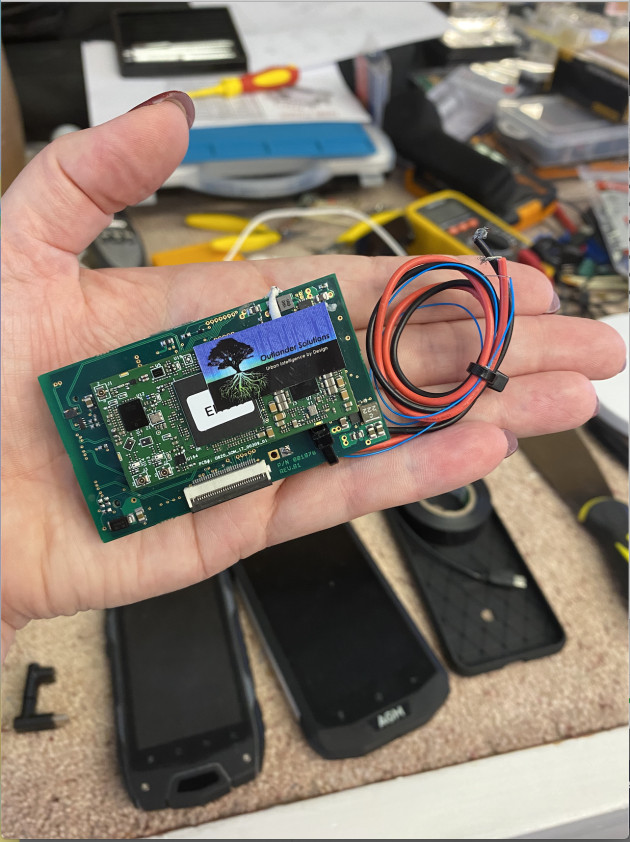
The aim of the company when it began was to think of communications and intelligence technology solutions from a completely clean slate; and if you want to avoid ITAR concerns and legacy issues, what would the network of choice look like from first principles, Mark Novak, Outlander’s Strategy and Business Transformation lead explained to ADM. The signals weight burden and system complexity on a solider carrying up to 60 kilograms is not ideal, with both Novak and CEO and founder Bevan Jones having extensive Defence and Industry backgrounds, are also keen to address payload, power and integration issues.
With a recently completed secure facility at their head office, the company is able to rapidly prototype and demonstrate their products, both hardware and software, to potential clients. The company is also working on hosting a number of sensor payloads in their hardware to include soldier HUMS, environmental monitoring and geo-location tracking alongside various radios in a single unit.
“A few million dollars to a small company goes a long way,” Jones said to ADM.
In terms of what they are bringing to the table for C4 EDGE, Novak explained it as the system that sits between the solider and the peripherals, almost like Bluetooth.
Penten
While still in its early years, cyber security and crypto experts Penten have come ahead in leaps and bounds in their work with Defence. From Defence Innovation Hub contracts, work through Army Innovation day and more, the company has also thrown its hat in the C4 EDGE ring. They will primarily be bringing their experience in secure systems architecture to the table as well as a number of other ingredients.
“It has been a really interesting program for a bunch of reasons,” Matthew Wilson, founder and CEO of Penten said to ADM. “One is the nature of its formation and the way it’s being run.
“The commitment and engagement out of Army, which has genuinely been spectacular, and then the nature of the little teamlets that have been formed out the back of this. Some of those relationships, certainly from Penten’s perspective, are now starting to get things done and will last well beyond this program.
“But I’d also say that the approach that EOS have taken has been light touch, which is a great thing. It’s really been about herding the cats to get the best out of the cats. EOS has not been prescriptive, but has pulled together the different elements of Australian industry and has worked with each of the organisations to try and find a path to deliver their best and show their best to Army with that particular mission requirement in mind.”
Wilson is also enthusiastic about the future prospects the program has highlighted, not just for Penten but all the partners.
“They (opportunities) seem to be coming thick and fast and I think one of the things that we’ve tapped into is this realisation that there is a pretty significant market for non-ITAR and non-Type 1 encumbered radio communications technology,” Wilson explained.
“It isn’t just about North America. It’s about a global need for a raft of communication modernisation opportunities that are built around some really significant changes taking place in the commercial satcom market and also in the commercial radio communications market. It’s about how to try and leverage those opportunities for defence forces around the world, but don’t have the muscle that someone like the US can put forward.
“At the end of the day Australia is a middle power. A lot of our allies look very similar to us and also have budgets that are smaller than the US budget and so it means that we need to make our dollars work a bit harder if we’re trying to deliver some technological advantage.
“From Penten’s perspective, our primary export market is the UK and we’re exploring some of those opportunities,” Wilson said. “But it’s a lot broader than that and to support our ally base and our regional partners. Our grand hope is that Australia will be our first customer through the collaborations that are coming out of C4 EDGE but, my genuine belief is that mid-term Australia won’t be our largest customer.”
Solinnov
Solinnov is a rapidly growing defence consultancy with many years of experience in the development of innovative and high-performance embedded signal processing solutions for software defined radios (SDR), with applications in wireless communications, radar and electronic warfare, according to a statement from the company. Solinnov is at the forefront of designing innovative real-time signal processing algorithms with the capacity to interpret and transmit signals within SDR systems.
Solinnov has developed an innovative SDR architecture called Pacific SDR architecture which is used for both communication and electronic warfare (EW) applications. This architecture has been designed to provide flexibility and versatility in communications, radar and EW systems. Using Pacific SDR, Solinnov has designed a distributed networked receiver system called BlueBottle that uses the concept of an “application store” where desired communications and EW apps can be seamlessly loaded and unloaded onto a low-cost expendable system.
As part of C4I EDGE, Solinnov have proposed to demonstrate a proof of concept for a Sovereign mobile ad hoc network (MANET) using BlueBottle hardware. The proposed C4 EDGE MANET project will implement a mobile ad hoc network using Solinnov’s Halite waveforms to demonstrate the capabilities of a complete sovereign hardware and software package designed to meet the challenges of land warfare communications requiring rapid field and network deployments.
The project will foster and demonstrate Australian industry’s capability in creating compact leading-edge MANET technology at low cost with applicability to other allied countries, a statement from the company said.
The C4I EDGE program has provided Solinnov with a great opportunity to expand the connectivity and communications vision for BlueBottle development and allows the Solinnov team to continue to push their skills in advanced SDR and field-programmable gate array (FPGA) development for robust wideband real-time tactical communications networks.
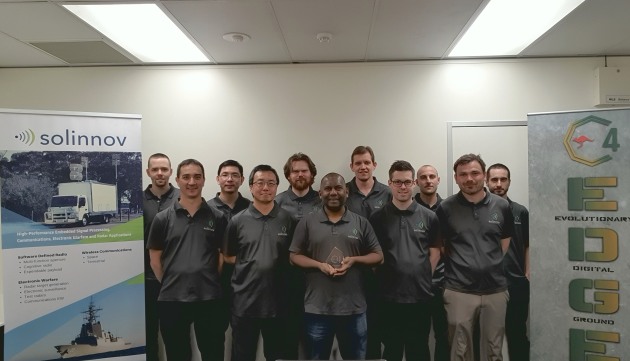

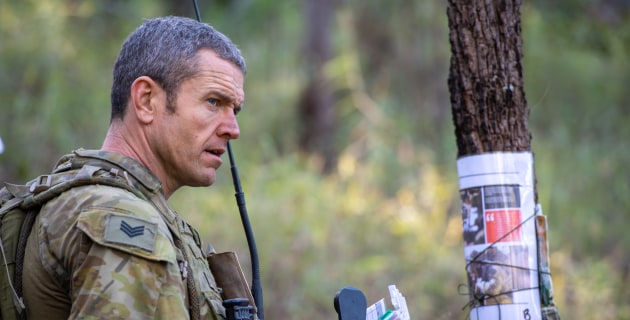

Comments are closed.